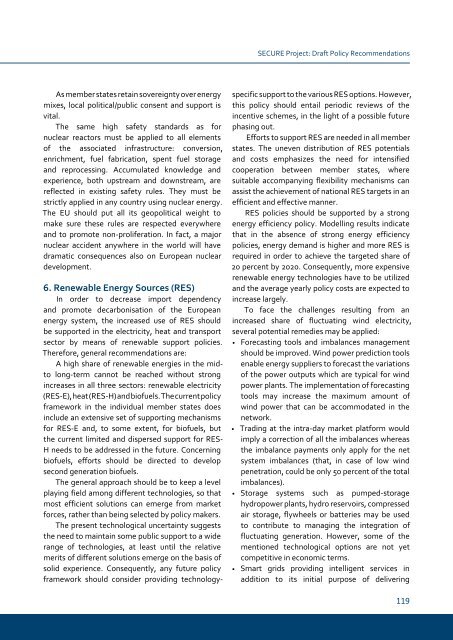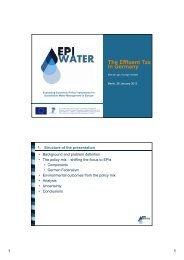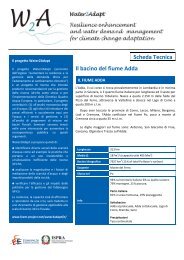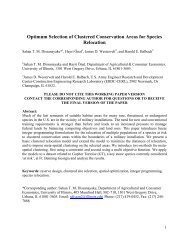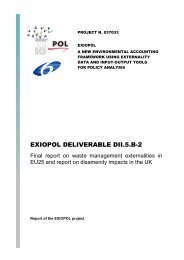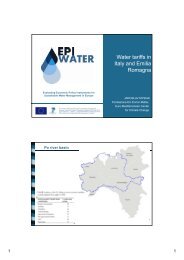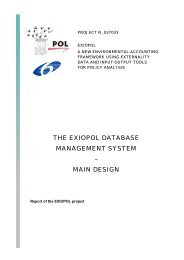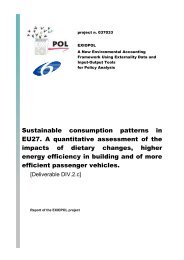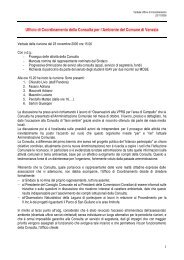Gulf and European Energy Supply Security - Feem-project.net
Gulf and European Energy Supply Security - Feem-project.net
Gulf and European Energy Supply Security - Feem-project.net
Create successful ePaper yourself
Turn your PDF publications into a flip-book with our unique Google optimized e-Paper software.
As member states retain sovereignty over energy<br />
mixes, local political/public consent <strong>and</strong> support is<br />
vital.<br />
The same high safety st<strong>and</strong>ards as for<br />
nuclear reactors must be applied to all elements<br />
of the associated infrastructure: conversion,<br />
enrichment, fuel fabrication, spent fuel storage<br />
<strong>and</strong> reprocessing. Accumulated knowledge <strong>and</strong><br />
experience, both upstream <strong>and</strong> downstream, are<br />
reflected in existing safety rules. They must be<br />
strictly applied in any country using nuclear energy.<br />
The EU should put all its geopolitical weight to<br />
make sure these rules are respected everywhere<br />
<strong>and</strong> to promote non-proliferation. In fact, a major<br />
nuclear accident anywhere in the world will have<br />
dramatic consequences also on <strong>European</strong> nuclear<br />
development.<br />
6. Renewable energy sources (Res)<br />
In order to decrease import dependency<br />
<strong>and</strong> promote decarbonisation of the <strong>European</strong><br />
energy system, the increased use of RES should<br />
be supported in the electricity, heat <strong>and</strong> transport<br />
sector by means of renewable support policies.<br />
Therefore, general recommendations are:<br />
A high share of renewable energies in the mid-<br />
to long-term cannot be reached without strong<br />
increases in all three sectors: renewable electricity<br />
(RES-E), heat (RES-H) <strong>and</strong> biofuels. The current policy<br />
framework in the individual member states does<br />
include an extensive set of supporting mechanisms<br />
for RES-E <strong>and</strong>, to some extent, for biofuels, but<br />
the current limited <strong>and</strong> dispersed support for RES-<br />
H needs to be addressed in the future. Concerning<br />
biofuels, efforts should be directed to develop<br />
second generation biofuels.<br />
The general approach should be to keep a level<br />
playing field among different technologies, so that<br />
most efficient solutions can emerge from market<br />
forces, rather than being selected by policy makers.<br />
The present technological uncertainty suggests<br />
the need to maintain some public support to a wide<br />
range of technologies, at least until the relative<br />
merits of different solutions emerge on the basis of<br />
solid experience. Consequently, any future policy<br />
framework should consider providing technology-<br />
SECURE Project: Draft Policy Recommendations<br />
specific support to the various RES options. However,<br />
this policy should entail periodic reviews of the<br />
incentive schemes, in the light of a possible future<br />
phasing out.<br />
Efforts to support RES are needed in all member<br />
states. The uneven distribution of RES potentials<br />
<strong>and</strong> costs emphasizes the need for intensified<br />
cooperation between member states, where<br />
suitable accompanying flexibility mechanisms can<br />
assist the achievement of national RES targets in an<br />
efficient <strong>and</strong> effective manner.<br />
RES policies should be supported by a strong<br />
energy efficiency policy. Modelling results indicate<br />
that in the absence of strong energy efficiency<br />
policies, energy dem<strong>and</strong> is higher <strong>and</strong> more RES is<br />
required in order to achieve the targeted share of<br />
20 percent by 2020. Consequently, more expensive<br />
renewable energy technologies have to be utilized<br />
<strong>and</strong> the average yearly policy costs are expected to<br />
increase largely.<br />
To face the challenges resulting from an<br />
increased share of fluctuating wind electricity,<br />
several potential remedies may be applied:<br />
• Forecasting tools <strong>and</strong> imbalances management<br />
should be improved. Wind power prediction tools<br />
enable energy suppliers to forecast the variations<br />
of the power outputs which are typical for wind<br />
power plants. The implementation of forecasting<br />
tools may increase the maximum amount of<br />
wind power that can be accommodated in the<br />
<strong>net</strong>work.<br />
• Trading at the intra-day market platform would<br />
imply a correction of all the imbalances whereas<br />
the imbalance payments only apply for the <strong>net</strong><br />
system imbalances (that, in case of low wind<br />
pe<strong>net</strong>ration, could be only 50 percent of the total<br />
imbalances).<br />
• Storage systems such as pumped-storage<br />
•<br />
hydropower plants, hydro reservoirs, compressed<br />
air storage, flywheels or batteries may be used<br />
to contribute to managing the integration of<br />
fluctuating generation. However, some of the<br />
mentioned technological options are not yet<br />
competitive in economic terms.<br />
Smart grids providing intelligent services in<br />
addition to its initial purpose of delivering<br />
11


